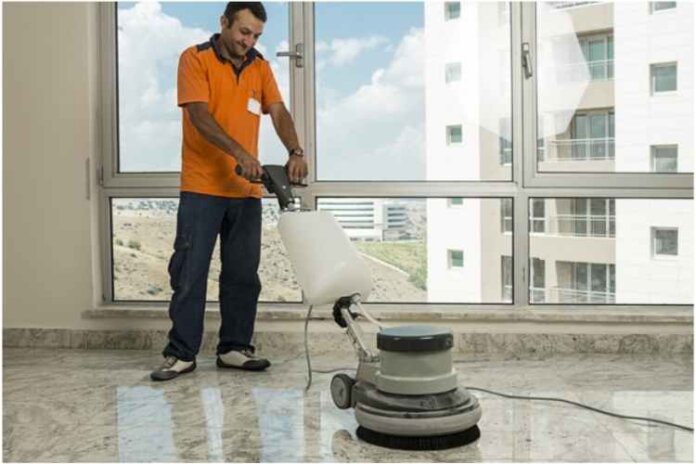
Did you know that in your entire cleaning program, floor care can take up 67% of your budget?
Expensive floor cleaning machines don’t exactly sound like good news. Well, they’re better at just about everything. They are more hygienic, save time and water, and also lessen costs.
So how do you know you’re buying the right one among many types of floor cleaning machines? Well, read on to find out!
Mop vs Machine
The upfront cost is the only aspect where the mop trumps the machine. However, factor in long-term labor, water, time, and effort costs; the machine takes the cake.
If you’re running a cleaning company, it’s a necessity. For health facilities like hospitals, machines are more hygienic, unlike double-dipping mops. Even smaller households and businesses will realize it’s an investment that quickly pays for itself with these benefits:
- Less time, effort, and labor costs
- More effective cleaning
- Better health and safety
- More efficient water consumption
Reaping all these benefits depends on choosing the right cleaning equipment. The following tips will help you do just that!
1. Know Your Measurements
Even if it doesn’t even fit where it’s supposed to clean, a mop and a bucket will win against the most expensive cleaning machine. Before browsing your options, take the following measurements into account:
- Width of the surface you intend to clean
- Corridors and doorways
- Space for human movement and turns
- Inclines and ramps
Try not to make unreliable estimates. Sure, you can eyeball if you’re buying cleaning equipment for a gymnasium. However, if it’s intended to clean narrower spaces, size matters.
When in doubt, whip out the tape measure.
2. Consider Your Building’s Layout
Different areas of a building will have different measurements, so account for even the smallest spaces. For example, maneuvering your way through winding aisles and small doorways while cleaning. Also, don’t forget to check obstructions like appliances or furniture.
3. Understand What You’re Trying to Clean
Learn the material and nature of the surface you want to clean. Hardwood, laminate, or vinyl won’t handle the same abrasion as concrete or tile. You might also be cleaning floors made of different materials in various areas within the facility.
4. Check Your Power and Water Source
Cleaning equipment uses corded electric, batteries, propane, diesel, or gasoline power sources. Sometimes, cords get in the way of cleaning or become tripping hazards. Most cordless options operate on battery, while the other power sources are usually for more heavy-duty equipment.
You’ll be dumping, filling, and rinsing your tanks, so check your water source and drainage. Filling and extension drain hoses can be from the manufacturer or local dealers. Also, be aware of local wastewater regulations.
5. Find the Type That Works Best for Your Purposes
Ride-on scrubbers increase productivity by 400% and are better for larger facilities. However, the productivity won’t be worth it for buildings with smaller spaces. More compact walk-behind or stand-on scrubbers have better maneuverability with obstacles and inclines.
Does all that decision-making sound like too much work? Well, that’s what the pros are for! Click the link to learn how to find the best janitorial service.
Take the Work Off Your Hands With Floor Cleaning Machines!
Few people—the very few Monica Gellers out there—enjoy sweeping and mopping floors. To most, manual cleaning is neither fun nor very effective. Fortunately, modern innovation once again saves the day with floor cleaning machines.
To really get the best bang for your buck, follow our tips when buying your very own cleaning equipment. If you want to up more than just your cleaning game, check out our other guides!











